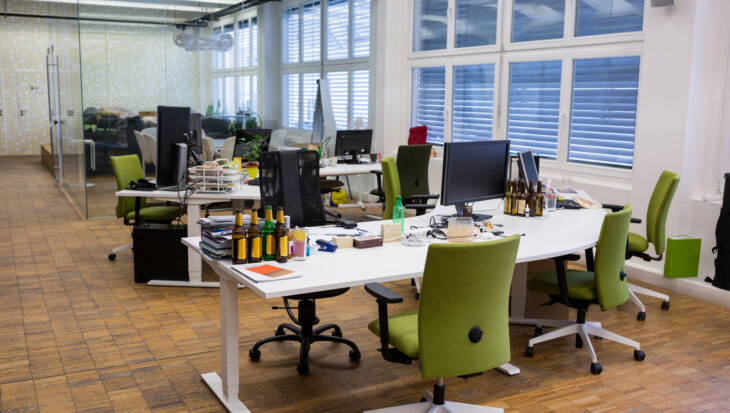Delaware has long been known as a strategic business destination, especially for corporations, financial institutions, and legal entities. However, over the past few years, the demand for office space across its major cities and business districts has been undergoing a visible transformation. Changes in workforce behavior, remote work preferences, technological advances, and real estate market shifts are reshaping the future of commercial spaces across the state. In 2025, this trend continues to evolve, influencing not only what businesses want but also how cities are responding to these new requirements.
Understanding the Changing Landscape of Office Spaces
The way businesses operate has changed significantly in recent years, and that shift is directly influencing real estate decisions.
Today’s office spaces are no longer defined by large corner offices or full floors leased for decades. Instead, businesses are focusing on flexibility, employee well-being, and digital infrastructure. This shift is particularly noticeable in Delaware, where diverse business hubs such as Wilmington, Dover, and Newark each present unique trends and preferences.
From Permanent to Flexible Work Models
The rise of hybrid and remote work models is reducing the need for traditional office spaces. Many companies are downsizing or reconfiguring their office footprints to accommodate rotating employee schedules. Rather than long-term leases, businesses now favor short-term agreements with flexible exit clauses. Coworking spaces and shared offices are growing in popularity, especially among startups and smaller firms that value cost-efficiency and agility.
Technology and Space Efficiency
Modern office tenants seek smart spaces equipped with high-speed internet, video conferencing tools, and IoT-enabled systems for climate control and lighting. This demand is driving landlords to upgrade facilities and rethink outdated layouts. Spaces that allow modular arrangements, quiet zones, and collaborative hubs are preferred over traditional cubicles and large conference rooms.
Wilmington: Delaware’s Financial and Legal Heart
Wilmington has always been the epicenter of Delaware’s corporate and legal community. Home to numerous banks, law firms, and Fortune 500 companies, the city has seen distinct changes in office demand.
As financial institutions embrace remote operations, there is less need for expansive headquarters. However, Wilmington still maintains high appeal for firms that require a prestigious address and proximity to the state’s court system. This duality is shaping a new type of office market—leaner but premium in quality.
Downsizing in the Financial Sector
Many banks and insurance companies in Wilmington are reducing their physical footprints. Older office buildings are being re-evaluated, with several undergoing renovations to meet new occupancy standards and technology expectations. Firms are seeking spaces that support a hybrid workforce and reduce operational costs.
Legal Sector Stability
Despite the overall reduction in office space use, Delaware’s legal sector remains relatively stable. Wilmington’s importance in corporate law keeps demand for professional office environments consistent. Law firms continue to lease traditional offices, but even they are embracing more compact layouts and flexible common areas.

Newark: Growth in Innovation and Education-Driven Demand
Newark, home to the University of Delaware and a growing number of tech startups, is emerging as a hub for innovation and academic collaboration. This character makes it attractive to a younger, more mobile workforce that values flexible workspaces and integrated environments.
Office demand in Newark is rising, but not in the traditional form. The focus is shifting toward mixed-use developments, campus-linked offices, and coworking ecosystems that blend work, study, and leisure.
Rise of Tech Startups and Incubators
Newark’s innovation corridor is fostering a new breed of companies that rely on shared labs, incubators, and plug-and-play office models. These businesses prefer environments that offer mentorship, networking opportunities, and access to university talent. As a result, the demand here is for smaller, more collaborative office settings.
University Partnerships
The university itself is playing a major role in shaping Newark’s office landscape. Several programs now include business incubation and research partnerships that require flexible space arrangements. This academic-business synergy is encouraging developers to construct buildings that cater to both student innovation and commercial application.
Dover: Government and Service-Based Real Estate
As Delaware’s capital, Dover’s business district is largely driven by government agencies and service-based industries. The office space demand here is undergoing more subtle shifts compared to other cities, but changes are still visible in the way public offices and supporting businesses are choosing to operate.
Hybrid work arrangements are becoming more common among state departments, leading to reevaluations of how much office space is truly needed. Simultaneously, small service businesses are exploring ways to reduce overhead by downsizing or shifting to home-based models.
Transition in Government Offices
The state government has begun to embrace flexible scheduling, allowing employees to alternate between office and remote work. While not all agencies are downsizing, many are consolidating operations to optimize resources. This is reducing the overall square footage requirement and opening up more centrally located buildings for private sector leasing.
Small Business Adaptation
Local service providers in Dover, including law offices, marketing firms, and health-related businesses, are moving toward smaller spaces with lower lease commitments. There is a noticeable trend toward multi-use commercial zones, where businesses share amenities such as conference rooms, reception desks, and parking lots.

The Role of Coworking Spaces Across Delaware
Coworking has moved from a trend to a permanent fixture in Delaware’s office ecosystem. Once popular mainly among freelancers and creative professionals, shared office environments are now attracting businesses of all sizes.
Companies looking to maintain a minimal but functional physical presence are leveraging coworking spaces to give employees optional workstations, meeting areas, and business services without the costs of traditional leasing. In cities like Wilmington and Newark, this model is particularly thriving.
Benefits for Small and Medium Enterprises
Coworking offers flexibility, cost savings, and community engagement. For startups and growing businesses, it removes the burden of long-term leases, utility contracts, and maintenance. Spaces are typically fully furnished, with modern amenities and access to business events and networking sessions.
Expansion into Suburban Markets
Coworking is not limited to urban centers anymore. In 2025, operators are expanding into suburban neighborhoods, recognizing that professionals prefer shorter commutes and more localized work options. This shift is diversifying the market and offering more choices for Delaware-based businesses and employees.
Economic and Policy Factors Influencing Office Trends
Local policy changes, tax incentives, and economic conditions also impact how businesses use office space in Delaware.
As cities aim to revitalize downtowns and attract new businesses, governments are providing tax breaks and grants for upgrading commercial properties. These incentives are encouraging landlords to invest in energy-efficient retrofits and flexible floor plans. In turn, this is attracting tenants seeking both affordability and quality.
Impact of Tax Structure
Delaware’s favorable corporate tax environment continues to draw new entities, especially in finance and consulting. While many of these firms maintain a remote-first model, they still require a registered office address and occasional meeting space. This is sustaining demand for virtual offices and part-time leases.
Infrastructure and Public Investment
The state has also invested in public infrastructure that supports business operations, such as broadband expansion and transportation upgrades. These enhancements are making it easier for distributed teams to remain connected and productive, regardless of where their central office is located.
Design Trends Driving Tenant Preferences
The look and feel of office spaces are evolving to meet modern expectations.
In 2025, Delaware tenants are asking for more than just four walls and a desk. They want natural lighting, indoor plants, quiet zones, wellness areas, and energy-efficient building systems. Developers and landlords are responding by creating spaces that blend aesthetics with function.
Focus on Employee Wellness
Offices with standing desks, meditation rooms, outdoor patios, and ergonomic furniture are becoming more desirable. Businesses are realizing that comfortable work environments contribute to higher productivity and employee retention.
Green Building Certifications
More companies are prioritizing sustainability, requesting LEED-certified spaces or buildings with solar panels, low-energy lighting, and eco-friendly materials. These choices align with both company values and long-term cost savings, making green design a win-win.

Future Projections for Delaware’s Office Market
Looking ahead, Delaware’s office space demand will likely remain hybrid and dynamic.
While full-scale return to traditional office setups seems unlikely, the need for professional spaces is far from gone. Businesses will continue to seek physical environments that support collaboration, innovation, and client interaction. At the same time, flexible leases, smart building features, and employee-centered design will define what tenants look for.
Emphasis on Choice and Customization
Future office environments will be built to support choice. Tenants may opt for smaller private spaces supplemented by shared amenities. Developers will need to build for customization, allowing tenants to modify layouts as their needs change.
Localized Work Environments
Rather than centralizing operations in one large office, businesses may create satellite offices in various cities across Delaware. This decentralized model will allow companies to serve regional clients while providing employees with workspaces closer to home.
Conclusion
The demand for office space in Delaware is not disappearing, but it is changing in profound ways. Businesses are rethinking how they use space, employees are seeking flexibility and wellness, and cities are adapting to meet these evolving needs. From Wilmington’s financial sector to Newark’s tech community and Dover’s public services, every business hub is part of this ongoing transformation. For developers, landlords, policymakers, and business owners, understanding these shifts is key to making informed decisions. The future of office space in Delaware will be defined by adaptability, innovation, and a deeper connection between work environments and human needs. As the state moves forward in 2025, its office landscape is becoming more resilient, inclusive, and ready for whatever comes next.





